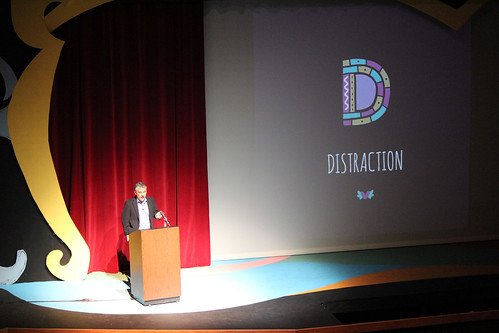Saturday I was at the Santa Catalina School in Monterey, talking about kids, parenting, schools, and contemplative computing (a riff on my book The Distraction Addiction).

Photo: Courtney Shove, Santa Catalina School
I’ve given a number of talks about contemplative computing (thanks mainly to the wonderful Lavin Agency), but most of them have been to professional groups, or parents, and occasionally kids. This was the first time I had a chance to speak to all three at once, and it presented a really interesting opportunity.

Photo: Courtney Shove, Santa Catalina School
All too often, when thinking about technology, kids and distraction, we make two mistakes: we think of it as a Young Person Problem, and we think of it as an individual issue.
It's easy to fall into thinking that technology has created an insurmountable gulf between us and the young, that kids are high-tech mutants. We hear stories, for example, about how texting rather than having face-to-face interactions make kids less able to read facial expressions, and hence more like robots.
But in fact, we all are challenged to figure out how to make technologies work well for us, regardless of our age. While there are some generational differences in the specific contexts we work in and the specific issues we face— adults face less cyberbullying (Gamergate excepted), while kids aren’t dealing with distraction in the workplace— we all face them.
And while it’s easy to think of distraction as a personal problem, a moral failing or sign of weakness— my distractions are very much my own— it also has a social and organizational dimension. We're beckoned by devices and social networks that want to capture and commoditize our attention. But if we can remake our relationship with devices, we can also use OTHER social networks to reinforce our efforts to become more focused, more thoughtful, more creative. Schools and families are two of the most important social networks.

Photo: Courtney Shove, Santa Catalina School
So trying to help our children and our students solve this problem is a way to solve it for ourselves. And this collective dimension is one that it was really good to be able to talk about, with everyone involved.
